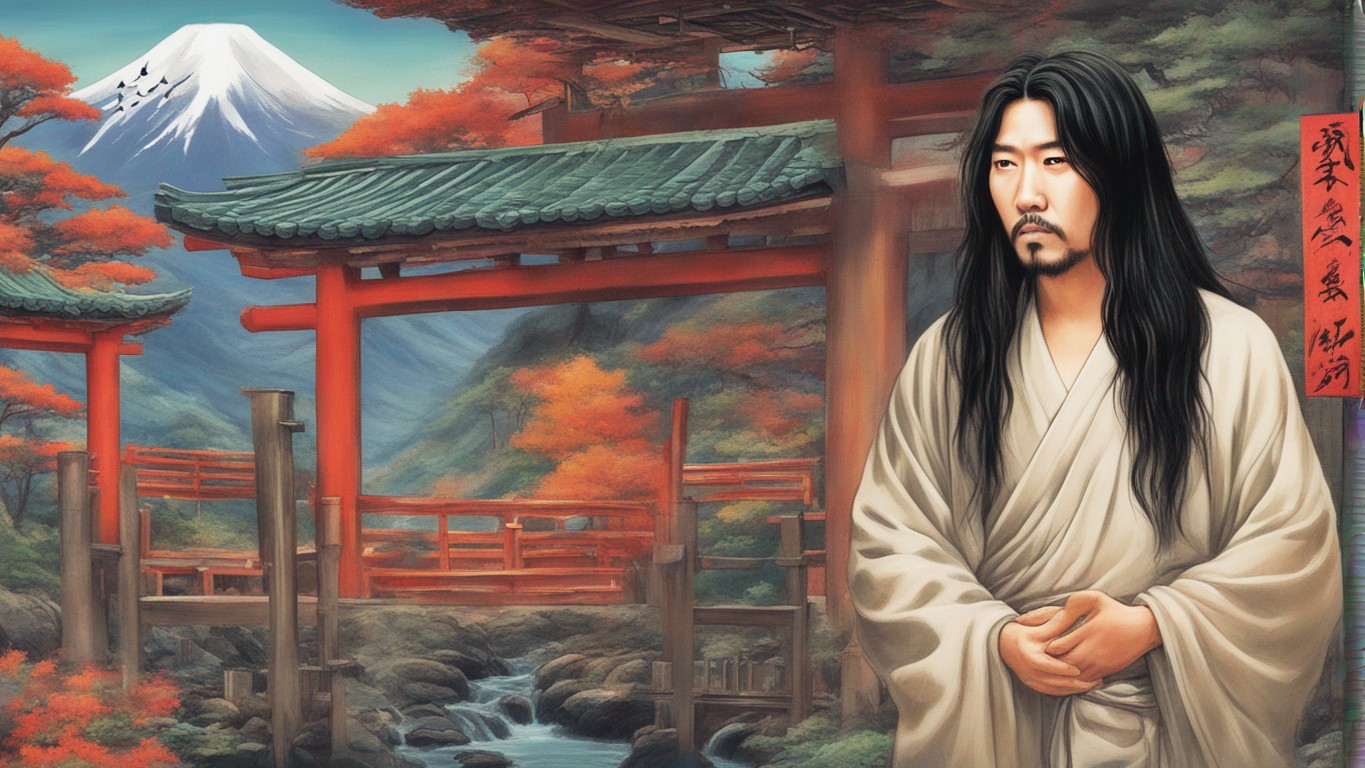Delving deeper into the labyrinthine world of Aum Shinrikyo requires confronting unsettling questions about human nature, collective psychology, and the perils of unquestioned authority. What transforms a spiritual community into a hotbed of extremist ideologies and actions? Aum Shinrikyo’s journey from an obscure religious sect to a name synonymous with domestic terrorism offers haunting insights into these questions.
The Man Behind the Curtain: Shoko Asahara’s Charisma and Influence
An investigation into Aum Shinrikyo would be incomplete without an analysis of its founder, Shoko Asahara. Born Chizuo Matsumoto, he changed his name as he adopted a spiritual persona. A charismatic leader, Asahara had the unique ability to manipulate people’s fears and aspirations. He claimed supernatural abilities, from levitation to predicting the future, enhancing his appeal among the followers.
Intellectual Appeal: The Magnetic Draw for Japan’s Elite
Contrary to the common stereotype of cult followers being naive or uneducated, Aum Shinrikyo managed to attract highly educated individuals. Its ranks included graduates from top Japanese universities who specialized in fields like medicine, engineering, and even law. This intellectual capital was pivotal in aiding the cult’s transformation into a well-organized, highly secretive operation capable of carrying out its sinister plans.
Financial Backbone: Resource Accumulation and Funding
Aum Shinrikyo was a masterclass in resource accumulation, leveraging both legal and illegal means. From multi-level marketing schemes that sold “spiritual” products, to more nefarious means such as extortion and fraud, the cult amassed a fortune estimated to be several hundred million dollars. This financial clout allowed them to invest in infrastructure that would later aid in criminal activities, including the construction of laboratories for chemical warfare.
A Global Reach: Foreign Operations and Connections
Although based in Japan, Aum Shinrikyo had a global footprint. The cult set up branches in countries like Russia and even tried to procure weapons-grade uranium. Reports also indicated attempts to establish connections with extremist groups in other parts of the world, indicating a grander vision of global chaos.
Psychological Warfare: Manipulation and Control Tactics
Inside the cult, various techniques were used to ensure members’ loyalty and compliance. Members underwent grueling initiation rites and were often subjected to “mind-altering” experiences. Information was controlled meticulously, and strict hierarchies were enforced, creating an environment ripe for manipulation and abuse.
Sarin Gas Attacks: The Prelude and the Aftermath
Before the devastating Tokyo subway attack, there was a less-publicized sarin gas assault in Matsumoto that targeted judges who were unfavorable to the cult. This attack served as a grim dress rehearsal for the Tokyo disaster. The aftermath of the Tokyo subway attack led to legislative changes, including revised laws around surveillance and the monitoring of religious organizations in Japan.
Legacy and Splinter Groups: The Hydra Phenomenon
Even after Asahara’s execution and the disbanding of Aum Shinrikyo, the ideological seeds sown by the cult have taken on new forms. Splinter groups like Aleph and Hikari no Wa continue to exist, albeit under close governmental scrutiny. These offshoots claim to have disassociated themselves from the violent teachings of their predecessor, but their mere existence is a chilling reminder of the cult’s lasting impact.
Academic and Social Discourse: Lessons and Warnings
The Aum Shinrikyo case has become a subject of academic interest, analyzed through various lenses from psychology to sociology. It also serves as a case study in law enforcement circles about the challenges of combatting domestic terrorism. The discourse that has spawned around Aum is not just retrospective but cautionary, raising red flags about the vulnerabilities that can be exploited by extremist ideologies.
The Unending Quest for Understanding
As we dig deeper into the catacombs of Aum Shinrikyo’s dark world, the quest for understanding seems increasingly elusive. Each new layer unearthed adds complexity rather than clarity. The case remains a grim testament to the intricate web of factors that can transform a search for spiritual fulfillment into a descent into collective madness.
